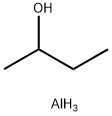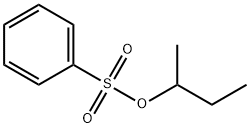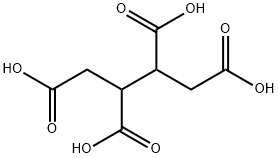sec-Butylamine
Synonym(s):(±)-sec-Butylamine;(±)-2-Aminobutane
- CAS NO.:13952-84-6
- Empirical Formula: C4H11N
- Molecular Weight: 73.14
- MDL number: MFCD00008094
- EINECS: 237-732-7
- SAFETY DATA SHEET (SDS)
- Update Date: 2024-12-18 14:15:30

What is sec-Butylamine?
Description
Sec-butylamine is an amine of butane. It can be used as a fungicide. It can be used as a fumigant for control of gangrene, skin spot and silver scurf diseases of potato tubers, citrus fruit decay. However, it is highly toxic to aquatic organisms.
Chemical properties
colourless liquid with an amine odour
Chemical properties
Butyl amines are highly flammable, colorless liquids (n-turns yellow on standing) with ammoniacal or fishlike odors. n-isomer:
Chemical properties
Colorless to yellow liquid; fishy ammonia aroma.
The Uses of sec-Butylamine
Fungicide.
The Uses of sec-Butylamine
(+/-)-2-Aminobutane is an important raw material and intermediate used in organic synthesis, pharmaceuticals and agrochemicals.
Definition
ChEBI: A primary aliphatic amine that is butane in which one hydrogen at position 2 is replaced by an amino group. A fumigant fungicide with a high potential for bioaccumulation, it is not approved for fungicidal use in the European Union.
Production Methods
2-Butylamine is manufactured by the condensation of methyl ethyl ketone with ammonia–hydrogen in the presence of Ni catalyst. It has been used as a fungistat.
Aroma threshold values
High strength odor; fishy type; recommend smelling in a 0.10% solution or less.
Hazard
Flammable, dangerous fire risk.
Health Hazard
Recommended Personal Protective Equipment: Chemical safety goggles; rubber gloves and apron; respiratory protective equipment; non-sparking shoes; Symptoms Following Exposure: Inhalation causes irritation of burns of the respiratory system; exposure to concentrated vapors can cause asphyxiation. Ingestion causes burns of mouth and stomach. Contact with eyes causes lachrymation, conjunctivitis, burns, corneal edema. Contact with skin causes irritation or burns, dermatitis; General Treatment for Exposure: INHALATION: remove patient from exposure; keep him quiet; contact physician. INGESTION: give large amount of water; induce vomiting; consult a physician. EYES: flush thoroughly with water for 15 min.; call physician immediately. SKIN: remove all contaminated clothing; flood affected area with large quantities of water; consult a physician; Toxicity by Inhalation (Threshold Limit Value): Data not available; Short-Term Exposure Limits: Data not available; Toxicity by Ingestion: Grade 3; oral LD50 = 380 mg/kg (rat); Late Toxicity: Data not available; Vapor (Gas) Irritant Characteristics: Vapors are moderately irritating such that personnel will not usually tolerate moderate or high concentrations; Liquid or Solid Irritant Characteristics: Severe skin irritant. Causes second- and third-degree burns on short contact and is very injurious to the eyes; Odor Threshold: Data not available.
Chemical Reactivity
Reactivity with Water: No reaction; Reactivity with Common Materials: May corrode some metals in presence of water; Stability During Transport: Stable; Neutralizing Agents for Acids and Caustics: Flush with water; Polymerization: Not pertinent; Inhibitor of Polymerization: Not pertinent.
Safety Profile
A poison by ingestion. A powerful irritant. Moderately toxic by skin contact. Dangerous fire hazard when exposed to heat or flame. To fight fire, use alcohol foam, water spray or mist, dry chemical. Incompatible with oxidizing materials. When heated to decomposition it emits toxic fumes of NOx. A fungicide.
Potential Exposure
Alert: (n-isomer): Possible risk of forming tumors, suspected of causing genetic defects, suspected reprotoxic hazard, Primary irritant (w/o allergic reaction), (sec-isomer): Drug. n-Butylamine is used in pharmaceuticals; dyestuffs, rubber, chemicals, emulsifying agents; photography, desizing agents for textiles; pesticides, and synthetic agents. sec-Butylamine is used as a fungistate. tert-Butylamine is used as a chemical intermediate in the production of tert-Butylaminoethyl methacrylate (a lube oil additive); as an intermediate in the production of rubber and in rust preventatives and emulsion deterrents in petroleum products. It is used in the manufacture of several drugs
Shipping
UN1125 n-Butylamine, Hazard Class: 3; Labels: 3—Flammable liquid, 8—Corrosive material. UN2014 Isobutylamine, Hazard Class: 3; Labels: 3—Flammable liquid, 8—Corrosive material
Incompatibilities
May form explosive mixture with air. May accumulate static electrical charges, and may causeignition of its vapors. n-Butylamine is a weak base; reacts with strong oxidizers and acids, causing fire and explosion hazard. Incompatible with organic anhydrides; isocyanates, vinyl acetate; acrylates, substituted allyls; alkylene oxides; epichlorohydrin, ketones, aldehydes, alcohols, glycols, phenols, cresols, caprolactum solution. Attacks some metals in presence of moisture. The tert-isomer will attack some forms of plastics
Waste Disposal
Use a licensed professional waste disposal service to dispose of this material. Dissolve or mix the material with a combustible solvent and burn in a chemical incinerator equipped with an afterburner andscrubber. All federal, state, and local environmental regulations must be observed.
References
Smilanick, J. L., and J. W. Eckert. "Growth, sporulation, and virulence of isolates of Penicillium digitatum resistant to the fungicide sec-butylamine. " Phytopathology 76.8(1986).
Graham, D. C., et al. "Use of 2-aminobutane as a fumigant for control of gangrene, skin spot and silver scurf diseases of potato tubers." Potato Research 16.2(1973):109-125.
Gutter, Y. "Combined treatment with thiabendazole and 2-aminobutane for control of citrus fruit decay." Crop Protection 4.3(1985):346-350.
Properties of sec-Butylamine
| Melting point: | -104 °C |
| Boiling point: | 63 °C(lit.) |
| Density | 0.724 g/mL at 25 °C(lit.) |
| vapor pressure | 22.13kPa at 20℃ |
| FEMA | 4240 | SEC-BUTYLAMINE |
| refractive index | n |
| Flash point: | −3 °F |
| storage temp. | Flammables area |
| solubility | 112g/l |
| form | Liquid |
| pka | 10.56(at 25℃) |
| color | Clear colorless to light yellow |
| Specific Gravity | 0.723 (20/4℃) |
| Odor | Ammonia-like. |
| explosive limit | 1.8-9.0%(V) |
| Odor Threshold | 0.17ppm |
| Water Solubility | MISCIBLE |
| Sensitive | Air Sensitive |
| Merck | 14,1544 |
| JECFA Number | 1584 |
| BRN | 1361345 |
| Stability: | Stable, but light sensitive. Incompatible with strong oxidizing agents, strong acids. Highly flammable. |
| CAS DataBase Reference | 13952-84-6(CAS DataBase Reference) |
| NIST Chemistry Reference | 2-Butanamine(13952-84-6) |
| EPA Substance Registry System | sec-Butylamine (13952-84-6) |
Safety information for sec-Butylamine
| Signal word | Danger |
| Pictogram(s) |
 Flame Flammables GHS02  Corrosion Corrosives GHS05  Exclamation Mark Irritant GHS07  Environment GHS09 |
| GHS Hazard Statements |
H225:Flammable liquids H314:Skin corrosion/irritation H400:Hazardous to the aquatic environment, acute hazard |
| Precautionary Statement Codes |
P210:Keep away from heat/sparks/open flames/hot surfaces. — No smoking. P273:Avoid release to the environment. P280:Wear protective gloves/protective clothing/eye protection/face protection. P303+P361+P353:IF ON SKIN (or hair): Remove/Take off Immediately all contaminated clothing. Rinse SKIN with water/shower. P305+P351+P338:IF IN EYES: Rinse cautiously with water for several minutes. Remove contact lenses, if present and easy to do. Continuerinsing. |
Computed Descriptors for sec-Butylamine
New Products
Tert-butyl bis(2-chloroethyl)carbamate (S)-3-Aminobutanenitrile hydrochloride N-Boc-D-alaninol N-BOC-D/L-ALANINOL N-octanoyl benzotriazole 4-Hydrazinobenzoic acid 3,4-Dibenzyloxybenzaldehyde 1,1’-CARBONYLDIIMIDAZOLE R-2-BENZYLOXY PROPIONIC ACID 1,1’-CARBONYLDI (1,2-4 TRIAZOLE) 4-HYDROXY BENZYL ALCOHOL 3-NITRO-2-METHYL ANILINE (2-Hydroxyphenyl)acetonitrile 4-Bromopyrazole 5-BROMO-2CYANO PYRIDINE 5,6-Dimethoxyindanone 5-broMo-2-chloro-N-cyclopentylpyriMidin-4-aMine 4-methoxy-3,5-dinitropyridine 2-(Cyanocyclohexyl)acetic acid 2-aminopropyl benzoate hydrochloride 1-(4-(aminomethyl)benzyl)urea hydrochloride tert-butyl 4- (ureidomethyl)benzylcarbamate diethyl 2-(2-((tertbutoxycarbonyl)amino) ethyl)malonate Ethyl-2-chloro((4-methoxyphenyl)hydrazono)acetateRelated products of tetrahydrofuran








You may like
-
 Sec-butylamine 95% CAS 13952-84-6View Details
Sec-butylamine 95% CAS 13952-84-6View Details
13952-84-6 -
 sec-Butylamine CAS 13952-84-6View Details
sec-Butylamine CAS 13952-84-6View Details
13952-84-6 -
 sec-Butylamine CAS 13952-84-6View Details
sec-Butylamine CAS 13952-84-6View Details
13952-84-6 -
 55441-95-7 99%View Details
55441-95-7 99%View Details
55441-95-7 -
 N-Vinylformamide 99%View Details
N-Vinylformamide 99%View Details
13162-05-5 -
 Chloro Uracil 1820-81-1 99%View Details
Chloro Uracil 1820-81-1 99%View Details
1820-81-1 -
 2-ethyl-6-methyl-3-hydroxypyridine succinate 99%View Details
2-ethyl-6-methyl-3-hydroxypyridine succinate 99%View Details
127464-43-1 -
 2-ETHYLPYRIDINE 100-71-0 99%View Details
2-ETHYLPYRIDINE 100-71-0 99%View Details
100-71-0